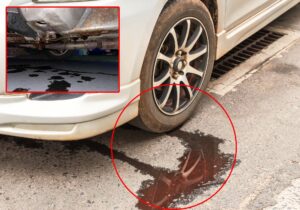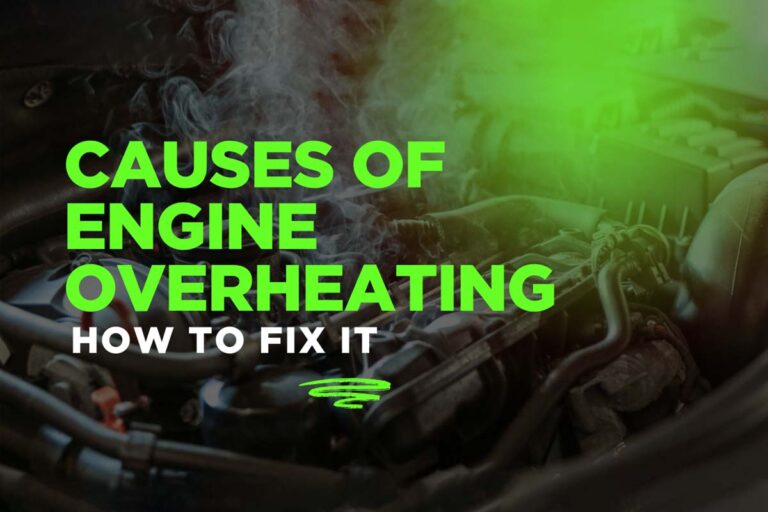How to Diagnose and Fix a Transmission Fluid Leak
A healthy transmission is essential for your vehicle’s performance. It ensures that power from your engine reaches the wheels efficiently, providing smooth acceleration, shifting, and driving. When your vehicle starts acting up — slow to shift, not accelerating properly, or leaving puddles behind — you might be dealing with a transmission fluid leak. Left unchecked, even a minor leak can turn into a major repair bill. In this guide, we’ll walk you through the common symptoms, diagnostic steps, typical leak locations, and repair considerations so you can address the issue quickly and confidently.
Understanding Transmission Fluid and Its Importance
Transmission fluid serves several vital roles in your vehicle:
- Lubrication: It keeps moving parts inside the transmission from grinding together and wearing out.
- Hydraulic function: In automatic transmissions, fluid pressure activates the gears.
- Cooling: It dissipates the heat produced during operation.
Low transmission fluid levels due to a leak can cause transmission components to overheat, seize, or fail altogether, leading to catastrophic damage and extremely high repair costs — sometimes requiring a complete rebuild or replacement.

Common Symptoms of Transmission Fluid Leaks
Transmission fluid leaks aren’t always obvious. Pay attention to these warning signs:
- Delayed Shifting: When you shift from park to drive or reverse, the vehicle hesitates or jerks before moving. This delay is often due to insufficient hydraulic pressure caused by low fluid.
- Revving Without Movement: You press the accelerator, hear the engine rev, but the vehicle barely moves or doesn’t move at all. This is a major red flag indicating inadequate transmission fluid.
- Poor Acceleration: Accelerating uphill or even merging onto the highway feels sluggish, even though the engine RPMs increase. This “slip” between engine speed and road speed is often due to slipping transmission clutches — a consequence of low fluid levels.
- Visible Leaks: Puddles or wet spots under your vehicle, especially reddish or brownish fluids, suggest a transmission leak. Fresh transmission fluid is typically bright red and slightly sweet-smelling, while older fluid may appear dark brown and have a burnt odor.
If you observe any of these symptoms, it’s critical to take immediate action.
How to Check Transmission Fluid Levels Safely
Checking the transmission fluid correctly is a critical first step in diagnosing a leak:
Prepare the Vehicle
- Drive the car until it reaches operating temperature. A 10–15-minute drive around town is usually sufficient.
- Park on a level surface.
- Leave the engine running (unless your owner’s manual specifies otherwise) and engage the parking brake.
- Shift through each gear briefly before leaving it in “Park” (or “Neutral” for some models).
Locate the Transmission Dipstick
- The dipstick handle is typically red (engine oil is usually yellow).
- Some newer vehicles may not have a dipstick — they use sealed systems and require checking via a fill plug underneath the car.
Check Fluid Levels
- Pull out the dipstick, wipe it clean with a lint-free cloth.
- Insert it fully, then pull it out again.
- Check if the fluid level falls between the “Add” and “Full” marks.
If it’s low, you likely have a leak. Also, inspect the fluid’s color and smell — dark, dirty fluid may indicate the need for a full service.
Important
Always verify with your owner’s manual whether your vehicle requires checking fluid hot or cold, and in Park or Neutral.
Common Places to Check for Transmission Fluid Leaks
Here’s where you should look if you suspect a leak
Transmission Cooler Lines
Transmission fluid often passes through a cooler (similar to a mini-radiator) to regulate temperature
- Check connections at the radiator or external cooler.
- Look for fluid stains, wet hoses, or cracked fittings.
Transmission Pan and Gasket
The pan houses the majority of your fluid
- Look around the pan’s edge for seepage.
- Over-tightening bolts or worn-out gaskets are common causes.
Seals and Shafts
There are multiple seals designed to prevent leaks
- Selector Shaft Seal: Connects your gear selector to the transmission.
- Input Shaft Seal: Located where the transmission mates with the engine.
- Output Shaft Seal: Connects the driveshaft to the transmission (or transfer case in 4WD models).
Worn seals can cause slow leaks that worsen over time.
Bell Housing and Torque Converter
Leaks from the torque converter area are serious
- Look inside small inspection ports for pooled fluid.
- A leaking front pump seal or torque converter can require transmission removal for repair.
Transfer Case (for 4WD Vehicles)
4WD systems have an extra component attached to the transmission
- Check for fluid leaking between the transmission and transfer case.
- Some models (notably GM trucks) are notorious for worn seals allowing fluid cross-contamination.
Axle Seals (for FWD Vehicles)
In front-wheel-drive vehicles
- Check around CV axles where they enter the transmission.
- Torn axle boots or damaged seals often lead to fluid loss.
Power Steering Confusion
Don’t confuse leaks:
- Some vehicles use automatic transmission fluid (ATF) in their power steering systems.
- Power steering leaks usually occur toward the front of the vehicle and may also leave reddish puddles.
Tools and Products You Might Need
Before beginning repairs, consider gathering these tools
- Jack and jack stands (or a lift)
- Fluid catch pan
- Transmission fluid pump (for refill)
- Seal removal tools
- Replacement gaskets, seals, and transmission fluid (OEM recommended)
Adding UV dye to the transmission fluid and using a UV flashlight is a popular method for locating elusive leaks.
Why You Should Fix a Leak Immediately
Ignoring a transmission leak can result in
- Severe Transmission Damage: Overheating and internal damage from low fluid can total your transmission.
- Environmental Harm: Transmission fluid is toxic and can contaminate soil and groundwater.
- Unexpected Breakdowns: Fluid loss can lead to a complete loss of drive, leaving you stranded.
Proactive repairs cost far less than full transmission rebuilds, which often run into thousands of dollars.
DIY Repair or Professional Help?
Many external leaks — like those from cooler lines, pan gaskets, or output seals — can be fixed by DIY enthusiasts with basic tools and patience.
However, if the leak originates from inside the bell housing (like a front pump seal or torque converter), it usually requires removing the transmission, a job best left to experienced mechanics.
Signs you should seek professional help include
- Large leaks or sudden fluid dumps
- Leaks accompanied by grinding, whining, or slipping
- Check Engine or Transmission warning lights
Conclusion
A transmission fluid leak isn’t something to ignore.
By knowing what symptoms to watch for, how to safely check fluid levels, and where to inspect for leaks, you can catch issues early — saving yourself money and headaches.
If you discover a minor leak, repair it as soon as possible. Regular inspections and maintenance go a long way toward extending your vehicle’s life and keeping it running smoothly.
For quality replacement parts, DIY support, and instructional videos, be sure to check out 1A Auto and other trusted resources.
And if you found this guide helpful, don’t forget to like, subscribe, and click the notification bell on their YouTube channel to stay updated with more repair tips!






